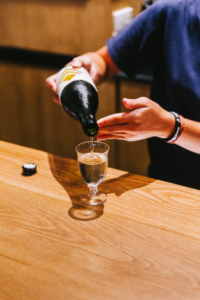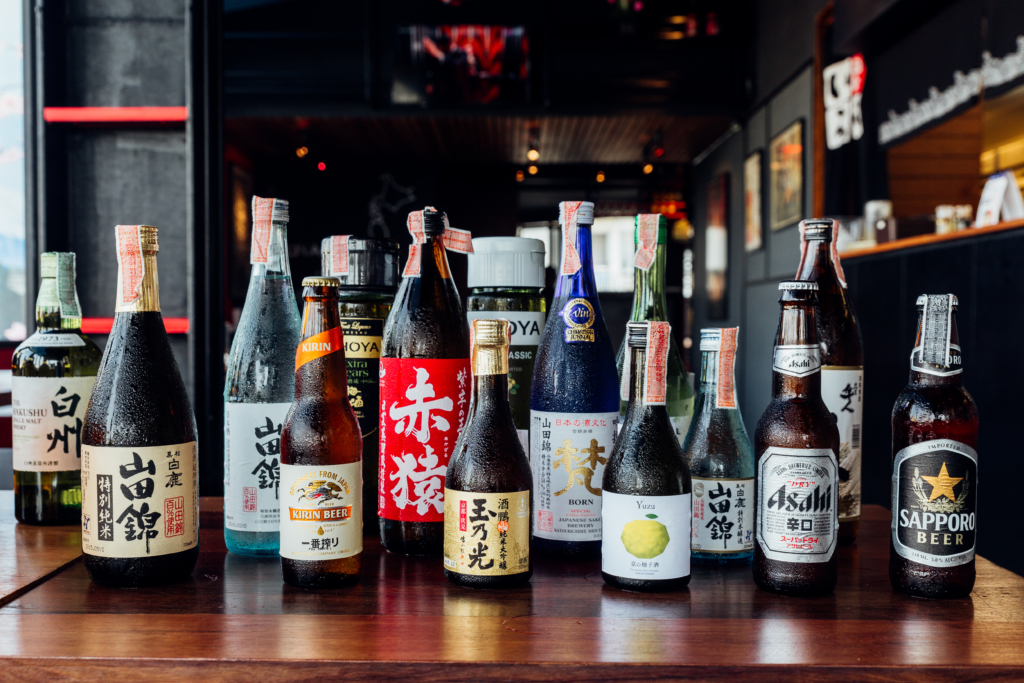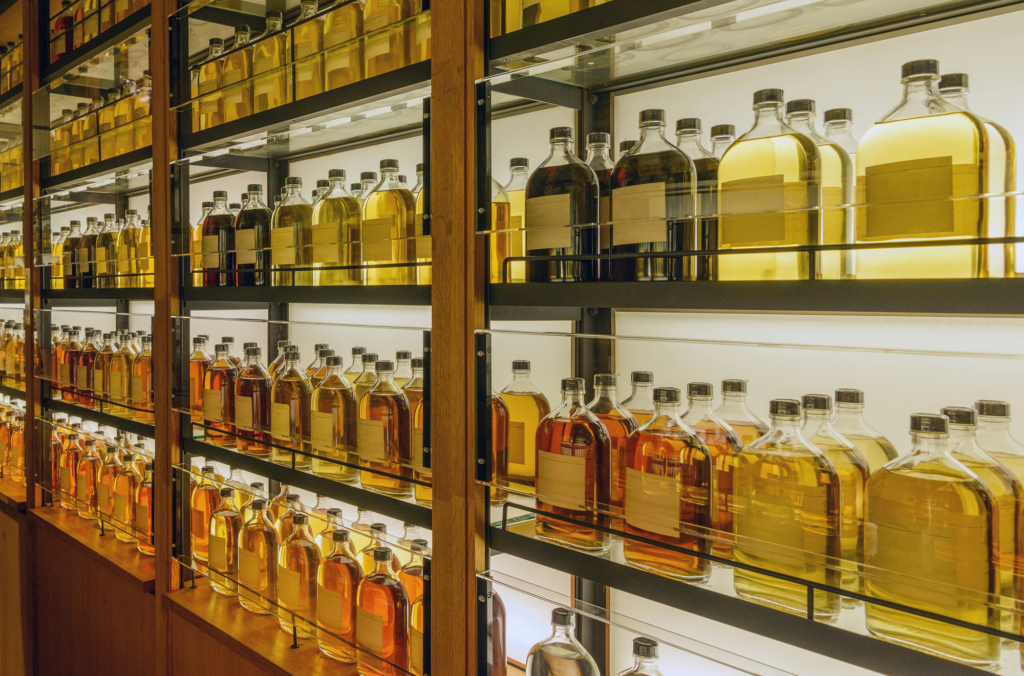Does Sake Go Bad?

The short answer is yes. Unlike wine or spirits, Japanese sake, or nihonshu (日本酒), lacks a significant aging culture. In fact, it is generally accepted that the sooner you drink sake, the better it is. That’s why the freshly pressed “shiboritate” (fresh-pressed) and other new sakes sell like hotcakes every year.
While sake brewers and retailers urge customers to enjoy their purchase as soon as possible, for many, this isn’t ideal. Whether you want to save a precious bottle for a special time, or aren’t sure what to do with a gifted sake, sometimes we simply want to wait!
Table of Contents
- Does Sake Go Bad?
- Can You Store Sake?
- Don’t Open It!
- How to Store Unopened Sake
- How to Store Opened Sake
- How to Tell If Your Sake is Bad
- Old Sake: See, Smell, Taste
- Will I Get Sick From Old Sake?
- My Sake is Bad – What Should I Do With It?
- Namazake – Always Keep Refrigerated!
- A Final Note about Koshu – Aged Sake!
Can You Store Sake?
The answer is ‘yes, however…’
While under controlled conditions unopened sake can be stored for many years, it doesn’t hold up to aging as much as other alcoholic beverages. Despite the high alcohol content preventing most bacteria growth, extended storage risks ruining the delicate umami tastes and rich fragrances that make sake special. That’s why we recommend relishing your sake as soon as you can! If this isn’t possible, use the following guide to ensure your sake is stored properly and will still be enjoyable in the future!

Don’t Open It!
If you’re not ready to indulge, then leave it sealed! Don’t open sake for a taste or smell unless you plan to finish it within the next week. Sealed sake is much easier to store than opened.

How to Store Unopened Sake
Cool and dark are the ideal conditions for unopened sake! Find the darkest and coolest place in your home and make it your sake cabinet. A cupboard, basement, or pantry will do just fine.
Cool: Keeping your sake cool will promote its longevity. If you have space in your refrigerator, by all means use it, otherwise a consistent room temperature between 10° to 15° C is perfect. Keep it away from heaters or windows.
Dark: One of sake’s many enemies is sunlight. UV radiation will change its color and affect taste and fragrance. While some breweries use dark bottles to protect their brew, many opt for a cheaper clear glass easily penetrated by sunlight. For extra protection, wrap your sake in paper or store it in a box. Even if the bottle is a stunning work of art, exhibiting your sake collection in the open is not a good idea. Drink and then display!
Looking to learn more about Japanese sake? Join an all-you-can-drink sake experience in Tokyo!

How to Store Opened Sake
Unfortunately, if you’ve opened the bottle or carton, the clock is ticking! Sake is being slowly damaged the moment it is exposed to the air. To ensure it stays fresh for another time, firmly replace the cap and place it in the fridge. While some opened sake may be safely stored this way for years, it’s best to finish the bottle within the following week. Avoid keeping it at room temperature too long!
If you want to go the extra mile, pumps to suck out oxygen and high-quality stoppers are available to help preserve opened sake. While a little pricey, if the sake is premium, investing in one of these mechanisms is well worth it! Search 日本酒 ストッパー on Rakuten or Amazon for a high-quality range.

How to Tell If Your Sake is Bad
So, you’ve stumbled across that bottle you forgot about. Or perhaps your local liquor store has some suspiciously cheap discount sake. Is it good to drink or down the sink? Here are some tips to help you tell!
Check the Bottling Date!
Instead of an expiration date, sake in Japan will display the date it was bottled. Known as the 製造年月日 (seizou nenggapi), the bottling date is generally located on the bottom of the front label and will follow conventional Japanese Y/M/D or Y/M date formatting. Check below for an example.

Less than 1 year old: The sake is fresh and ready to be drunk!
1 – 3 years old: Probably not at its peak condition, but still enjoyable if stored properly. Only buy if discounted!
4+ years old: Do not buy! Use the guide below before consuming!

Old Sake: See, Smell, Taste
At the end of the day, no matter the condition or age, some sake will be good and some will be bad. To find out which is which, follow the guide below!
See:
Bad sake may have a yellowish hue similar to white wine. If the bottle is darkly colored, pour the sake into a glass to double check. Unpleasant lumps floating or resting at the bottom are also very prominent signs of a severely degraded sake.
Smell:
Pop the cap and take a whiff! Rotten, earthy, burnt, or yogurt-like smells mean that the sake has likely deteriorated. This could be due to any number of factors.
Taste:
If you see or smell nothing unusual, go for a taste! Simply put, if it tastes bad, don’t drink it!

Will I Get Sick From Old Sake?
If the bottle is properly sealed and smells/tastes fine, it’s very unlikely you’ll become sick (excluding hangovers!) Even if there is discoloration, strange smells, or quirky tastes, no harmful bacteria should have entered the sake, making it safe. If the cap is in any way breached, do not drink! If something tastes horrible, it’s usually your body’s way of signaling danger, so listen to your taste buds and don’t force yourself.
My Sake is Bad – What Should I Do With It?
If your sake is undrinkable, don’t throw it out unless it’s extremely spoilt! Old sake can be used in cooking; mellowing pungent ingredients and adding flavor. As long as the bottle was sealed, the alcohol content will prevent any dangerous bacteria from growing, so it won’t be dangerous to consume. If it tastes a bit too off to want to drink, but not foul or unpleasant, put it to good use in your kitchen! Some delicious sake-based cooking ideas can be found here.

Namazake – Always Keep Refrigerated!
Namazake (生酒) is a sake variety that has not been pasteurized to kill off bacteria used during the fermentation process. Therefore, namazake needs to be constantly refrigerated to prevent this bacteria from multiplying and ruining the brew. Store namazake in the fridge and finish it as soon as possible.
A Final Note about Koshu – Aged Sake!

Despite previous assertions, a vintage sake culture does exist! Sake purposely stored and matured for years, known as “koshu” (古酒), is readily available and thriving! Koshu is often colored a light amber, almost like whiskey, and presents a wildly different character from regular sake. Bitter, rich, musty, and with a slightly oily texture, they are a controversial yet fascinating entry to the sake world. A range of innovative aging techniques yield a variety of koshu almost as dynamic as regular sake itself! For more information, Sake World offers a detailed koshu explanation.
Hopefully this article has answered your questions about keeping your sake fresh. If you’re just getting into the wide and exciting world of sake, you might like to read our other article titled How to Drink Sake: A Guide to Choosing, Buying, and Drinking Sake in Japan. Happy drinking!
If you want to give feedback on any of our articles, you have an idea that you’d really like to see come to life, or you just have a question on Japan, hit us up on our Facebook!
The information in this article is accurate at the time of publication.

